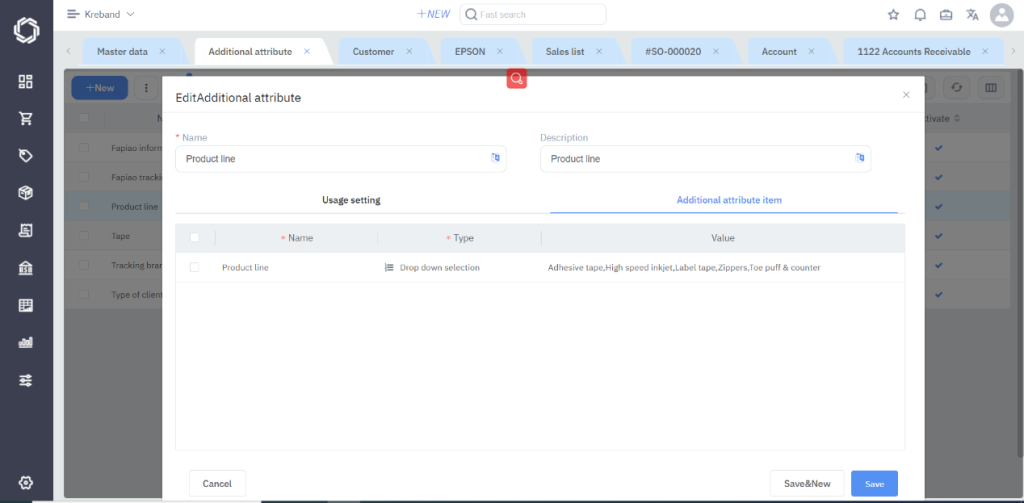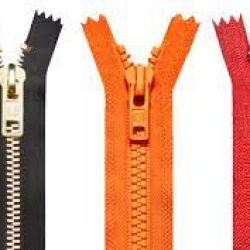Introduction
Kreband (www.kreband.com) is a company headquartered in Spain and mainly operates on manufacture and export of nylon, metal and molded zippers for the footwear, leather and textile industries. The company has a factory producing zippers in Quzhou, Zhejiang China and export them to its overseas parent company or to final customers. In addition, it also imports certain raw materials from Spain and sells them to domestic Chinese suppliers in the industries.
By implementing Jeenie cloud ERP system, Kreband is able to obtain a solution far more superior than other ERP system with a relatively lower cost. It achieves complete inventory management, clear and efficient process control, integrated accounting and statutory compliance, as well as meets the needs for real-time management reporting and analysis. Several key requirements and Jeenie solutions are illustrated below.
1.Sales and inventory control of bobbins and tapes
Kreband imports bobbins from the supplier in Spain and ultimately converts them into tapes for customers. Bobbins are measured in square meters whereas tapes are in rolls. In the actual business scenario of bobbin sales, bobbins are converted into customized tapes according to the order requirements, before delivered to customers. As Kreband performs the fabrication of bobbins into tapes normally after order is placed by clients, and ship the produced tapes to clients shortly after conversion, the time customized tapes stay in warehouse is quite short, usually less than a day. Moreover, the production is customized to the specification of individual customer order, such as length, width, and number of rolls of tapes, which varies from order to order. The above two reasons make it unnecessary to code tapes into master data and track them as inventoried items in Jeenie system, otherwise it would infinitely enlarge the number of items defined in item master. However, the specific information of tapes still needs to be displayed on sales order, invoice and delivery note.
Additional attributes feature of Jeenie is employed to achieve the goal of tracking bobbins in inventory while displaying information of tapes in sales. Additional attributes allow users to define bespoke information fields to add further details to master data or transaction forms such as item master, sales, purchases or expenses. Additional attribute can carry multiple data fields with various types of information, such as texts, amounts, time, date, options etc.
In this scenario, Jeenie defines tapes in transaction forms, such as sales order, delivery note and invoice, since tapes are not defined as product master. Additionally, printing layouts for sales order, invoice, and delivery note can also be customized by replacing the information of bobbins with the that of tapes, which are defined as additional attributes. Hence, it achieves efficient inventory control on bobbins and display of tapes on sales.

2.Track revenues on product lines and sales regions.
Kreband has multiple product lines, and also sells products to both domestic and overseas customers. Kreband intends to track the sales of track different product lines in different regions. For example, for a specified period of time, zipper product line sales to China market, Bobbin product lines sales to overseas market.
Additional attributes feature is used again to tackle this requirement. Product line is defined as additional attribute for product master, and sales region is set up as additional attribute for customer master. In additional to standard information, Jeenie reports support inclusion of additional attributes into reporting data fields which are custom defined in master data and transactions. Hence, product line and sales region are then used in the sales report as sorting fields to classify and display the sales revenue.

3. Inventory Accrue and Goods in Transit
It is quite common in Kreband that the purchased goods and purchase invoice do not arrive at the same time, namely the goods arriving before purchase invoice or the purchase invoice arriving before the goods. Jeenie supports the accounting treatments for both scenarios:
1) When the goods arrive before purchase invoice, the value of goods is temporarily estimated in the book and superseded by actual value later when the invoice is received.
2) In the event that invoice arrives first, the goods-in-transit account is utilized to temporally keep the value of the goods which is not in inventory yet.
Purchasers and accountants of Kreband leave it to Jeenie to properly take care of the accounting of stock receipt and supplier invoice which are of the same purchase order but may occur in different chronological sequences.


